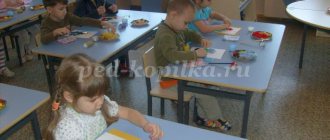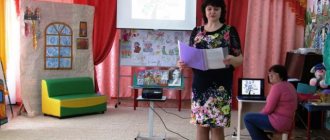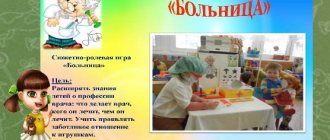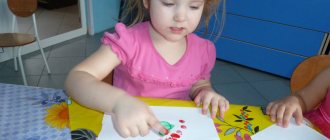Slide captions:
Hats From under a scarf or from under a bang, Sometimes from under a beret, Sometimes ladies, sometimes girls Always enchant us with their looks.
From the history of headdresses Headdress is what people dress in. Attire, attire, decoration. Headdress is the general name for things that serve as clothing for the head (cap, hat, cap, scarf, etc.).
The headdress, in addition to its main purpose - to keep the head warm, served a distinctive function, and once served as a symbol of power and might. In the Middle Ages, hats became decoration and luxury items. People decorate them with tufts of feathers, fur, ribbons and jewelry.
Cloaks with hoods In the Middle Ages, men and women wore capes and cloaks with hoods. Hoods had a wide variety of shapes. Sometimes the end of the hood was so long that it hung below the waist.
Turbans The fashion for turbans came from the East, and they became most widespread in Europe. They were worn by men and women. The Persians called a turban the material with which they tied their heads.
Turban Close to the turban was the turban - a piece of fabric wrapped around the head over a skullcap. The turban could be ceremonial or home, and could easily be transformed into a sash.
Cap In the Middle Ages, a cap appeared in Europe. The caps that babies now wear were worn by men. It was first used for bathing and sleeping by both women and men. A man's cap could have a long end hanging to one side. Later, men abandoned this headdress, and ladies wore it until the end of the 19th century.
Murmolka Wealthy people sewed hats from thin cloth or velvet, and the rich from fabric or satin. The prince's head was covered with a white brocade murmolka with a flexible diamond feather. Murmolka was a type of cap - quadrangular, low in shape. Such headdresses were preferred by boyars, merchants and clerks.
Kokoshniks, magpies, kiki In Rus', married women generally could not go bare-haired. They wore kokoshniks, two-horned kiki, and one-horned magpies.
Beret A beret is a soft headdress. It first appeared in the Middle Ages. Its shape resembled a quadrangle. It became round and secular at the beginning of the 16th century in Italy.
Tricorne hat At the beginning of the 18th century, the brims of hats began to be bent in several places. A tricorne hat appeared - a hat with brims squeezed into three corners. At the end of the 18th century it was replaced by the two-cornered hat.
Top hat In England, everyone wears a top hat - a tall hat with a small brim. In the beginning, colored top hats (especially light gray) were in fashion, but over time they became strictly monochromatic.
Boater At the turn of the 19th and 20th centuries, a boater appeared - a straw hat with a hard, flat, round crown and even brim.
Baseball cap The closer we get to our time, the more rapidly fashion changes. Baseball cap is a light cap with a long visor. At the end of the 20th century, it was extremely popular among young people.
Veil Veils probably originated in the East, where they are still preserved. Since the fourth century, a white veil has become a mandatory decoration for a Christian bride, and, conversely, a black veil for Christians means mourning.
Kasketka Kasketka is a men's cap with a visor, without crown and band, known since the beginning of the 19th century. What is commonly called a cap in France is called a cap in Russia.
Kartuz Kartuz is a cap with a visor. In addition to the military, civilians also wear caps. This is quite a stylish headdress, so it requires appropriate clothing.
Cowboy hat A cowboy hat is a modification of the sombrero of cattle breeders in the West and the USA. From time to time, various versions of this hat appear in men's and women's fashion.
Panama Panama was originally a headdress mainly for adults. It was invented by residents of one of the Central American countries. At first, the Panama hat was woven from palm fibers. Nowadays, a Panama hat is a lightweight hat with soft brims that can be stitched and pulled down.
Preview:
To use presentation previews, create a Google account and log in to it: https://accounts.google.com
Creative projects and student work
1.3. Women's hats
Kichka - women's folk headdress
The ponevny complex was complemented by a headdress, mainly of the kichka , with animal shapes. However, unmarried girls, as elsewhere in Russia, wore an open headdress - a headband in the form of a more or less wide ribbon, sometimes with a hard band, complemented by a tail made of ribbons.
The headband could be decorated with beaded fringe, reminiscent of northern duckweed. In the Southern, South-Western and South-Eastern regions, the kokoshnik , a headdress for married women, was also used. In the Smolensk province it was a tall spade-shaped kokoshnik, brocade or velvet, decorated with gold embroidery and a beaded or pearl bottom, or a low cap-shaped kokoshnik, covered with muslin, a towel, with red weaving at the ends or a scarf.
In the Ryazan, Tula, Kaluga provinces, it had a high headband and a round bottom made of red velvet or woolen fabric; The headband and bottom were embroidered with gold, trimmed with braids, the back of the head was decorated with ribbons and beads, and beaded pendants hung from the sides.
Gradually, the kokoshnik as a more archaic headdress was replaced by a kichka with a magpie and generally belonged to fairly wealthy women. It is not without reason that in the Oryol, Kursk, Voronezh, and Tambov provinces it was used mainly by single-family households, and was worn after a wedding, on holidays, and mainly before the birth of the first child.
There were three types of kokoshnik here: the Kursk double-comb , or saddle-shaped “shelomok” , a kokoshnik with a high, hard headband that gently sloped toward the back of the head and resembled a cap, and a high, hard cylindrical kokoshnik with a high rectangular comb at the back of the head.
Kokoshniks were decorated with gold braid and embroidered with sequins and beads. When putting on the kokoshnik, it was slightly shifted onto the forehead, and the back of the head was covered with a canvas backplate with an extension made of crimson velvet, secured with ribbons. Sometimes a red ribbon and a silk scarf in the form of a strip from corner to corner were tied over the kokoshnik. tied with ends in front or at the top of the head.
Povoinik - women's folk headdress
Kitsch-shaped headdresses, most characteristic of the ponyov complex, were widespread throughout the southern Great Russian provinces.
In a number of places, the term “kichka” applied to the entire headdress, sometimes extremely complex in design, consisting of more than a dozen parts.
In this case, one of the main details, the kichka itself in the classical sense of the word, which is a solid elevation above the forehead, a kind of band in combination with a hairline that fits tightly to the head, was called a warrior .
A solid band of various shapes - triangular, round, spade-shaped, with two horns, was made from quilted or glued canvas, bast, birch bark. The back of the head was put on the povoinik, or the kichka itself. and then on top - magpie.
The back of the head is a rectangular strip of fabric, often velvet, decorated with embroidery and beads, tied on the crown of the head with ribbons and covering the hair at the back.
Soroka - women's folk headdress
A magpie is a specially cut and sewn piece of fabric - red satin, satin. damask - with a headband embroidered with gold thread or made from wide galloon.
Magpies are often found in which the fringe and side wings are fastened together and form something like a cap; they were made from colored corduroy and decorated with galloon, or they were sewn entirely from wide galloon.
They decorated the sides with large colored silk pom-poms-terry, as for example in the Oryol and Kursk provinces. Sometimes the back of the head was simply sewn onto the magpie.
In some places in the Voronezh and Tambov provinces, a piece of fabric decorated with ribbons, braids, and beads was worn over the kicheka, falling to the waist. In some places in the Tambov province there was a horned kitty with very high horns.
A type of kitty-shaped headdress was the kishchonka, which was worn over the kitschka itself and was a forehead piece decorated with ribbons, beads, braids, sometimes with rosettes of ribbons at the temples.
In the Ryazan, Tula, and Kaluga provinces, a horned kitty in the form of sharp horns, rolled from hemp and quilted with thread, was most often used as a frame for a magpie; There were also blunt-horned, polled, spade-shaped and hoof-shaped tussocks made of bast, lined with canvas.
A warrior with a restraint on a cord was hung from behind it. On top of the kichka they could put a bundle in the form of a strip of canvas with embroidered squares at the ends; it was put on the forehead, and the ends were tied at the back under the back of the head. Before the magpie, he usually did embroidery. The magpies of elderly women and widows were white, the young women sewed an everyday magpie from red dye, a festive one from calico or crimson damask, lined with white canvas, motley fabric, and printed material.
Magpies were a complex dress of eight, eleven, even fourteen elements that had their own ties. A little cap with a hard brim was put on the head and tied with ribbons. A collar with beaded or silver embroidery was tightly tied to it. Then they put a magpie on the kitty and also tied it with ribbons.
Then underneath it was put on - a forehead decoration in the form of a mesh of small colored beads, behind it - a rear edge and a front edge made of fan-shaped multi-colored silk ribbons, trimmed with braid; with the help of ties, the edges were strengthened under the bottom of the magpie.
Underneath was also worn a forehead piece with braids in the form of black drake feathers on a strip of braid, secured with rosettes of multi-colored silk ribbons and buttons.
A forehead was worn over the braids - a red silk ribbon on a ribbon, the ends of which hung over the temples. Under the back of the head two long silk ribbons were tied with a ribbon - a plumb line.
Above the plumb line was attached an “ arepei ” - a rosette of one wide and two narrow ribbons with a button in the center; he covered the magpie in the place where the ties and ribbons that held other parts of the headdress met. All this was richly decorated with beads, glass beads, and embroidery with gold and silver thread.
There could have been other details, variants of shapes and names. For example, in the Smolensk province they wore high and horned quilted kichkas, under which they wore a plait of tow. On top of the kichka they put on a magpie, a forehead cap, a back cover, terry cloth, a brace, pendants, and on top of all this, a basting .
It looked like a long towel made of thin white homemade canvas, folded into a strip, which was used to wrap the kitty three times; the ends of the basting with colored fringe were pinned on the sides or tied at the back and unraveled. At the ends of the basting, a geometric or stylized floral pattern was embroidered in satin stitch, stripes of red tape, ribbons, and thin lace were sewn on.
Girls also wore baste, but shorter or without a bun, so that the top of the head remained open. At the end of the 19th century, in the Smolensk province there was also a collection in the form of a piece of fabric cut on one side and folded on the head.
Also used here was a “podubrusnik”, quilted from canvas or velvet, in the form of a gold-embroidered warrior with a hard band made of plank; a scarf folded at a corner with the ends tied at the back “in a woman’s style” was put on a canvas undercoat.
Povoinik - women's folk headdress
Across all southern Great Russian provinces, especially in the 20th century. Shawls were widely used - factory or homemade, printed, often trimmed with fringe, red, beads, bugles.
Girls tied a scarf under their chin, or folded it into a wide strip at the back under the braid, and married women tied it at the back of the head.
The girl's headdress in the sarafan complex, as in the panel complex, was bandages or ribbons - more or less wide strips of damask, velvet, silk on a solid base in the form of a hoop, tied under the braid with ribbons.
One wide or several narrow ribbons were sewn at the back above the ribbons. The frontal part of the headdress was usually embroidered with gold thread and decorated with flounces or stacks of pearls and beads.
As a wedding headdress in the North, a “ crown ” was used - a very wide openwork, richly decorated hoop. veil was widespread - a silk, usually red, scarf folded at an angle and laid in the form of a strip; it usually covered the parietal part of the head and was tied at the back under the braid. Braids were often woven into braids with long silk ribbons tied to them, and sometimes with a braid - a small embroidered or brocade triangle.
Kokoshnik - women's folk headdress
Among women's headdresses, the most common one was the kokoshnik .
Its forms are varied. In the Olonets province it was usually a one-horned kokoshnik on a solid base, with an eyepiece protruding upward in the form of a horn and a flat top that fell on the ears from the sides. A similar form of kokoshnik existed in other northern provinces. In some areas of the Perm province, a large crescent-shaped kokoshnik with sharp ends almost reaching to the shoulders was used. Kokoshniks of this form were also used in the Middle Volga region along with kokoshniks in the form of a velvet or brocade cap.
In the Kazan province there were spade-shaped kokoshniks with an almost rectangular headband, as well as high, pointed kokoshniks. In the Kazan province there were also two-horned kokoshniks , called kichkas here. Kokoshniks were richly decorated with freshwater pearls, beads, sometimes forming flounces, mother-of-pearl dies, braid, embroidery with gold thread, and a net of pearls or duckweed beads descended onto the forehead.
In the Pskov province there was a one-horned kokoshnik , the headband of which was densely planted with pearl cones. A light blanket was sewn to the high pointed and spade-shaped kokoshniks, which fell over the shoulders and back.
Kokoshniks were usually worn only by young women who had recently gotten married. After some time, especially after the birth of their first child, they wore kitty-shaped headdresses.
Thus, in the Olonets province there was a magpie with a “sderikha” - a kind of cap made of canvas with a crown in the form of a hoof (sderikha), on which they put a soft magpie in the shape of a low blunt cone, with ties on the sides, tied at the back of the head under the rectangular end of the magpie. The Pomeranian kitty looked like a hard cap with an elongated flat occipital part.
Gradually there was a transition to the use of simple warriors in the form of a cap with a guard at the back of the head. Both the magpie, the kichka, and the warrior were decorated with embroidery with gold thread, braid, lace, and the like.
They wore a warrior with a scarf. It was also common to wear two scarves: one was tied around the head, like a warrior, and the second was covered on top. In the Volga region, the second scarf was often worn “unraveled”, tied or pinned under the chin so that two corners of the scarf fell onto the back.
Gaitan - women's folk decoration
Breast, neck and other decorations were quite varied.
This is a gaitan - a woven beaded braid 50-70 cm long, ending with a fringe, medallion or cross.
This necklace is in the form of a narrow strip of calico with tightly sewn beads and mother-of-pearl buttons.
They wore blown glass beads, a variety of blown copper earrings with pendants made of colored beads, multi-colored wool, etc. Also, they wore cannons, very characteristic of kitty-shaped headdresses - ear decorations in the form of balls of white goose down or hare skin, attached to the temples.
Go to section: 1.4. Men's suit
Slide captions:
Today, in every person’s wardrobe you can see several hats. Usually for women it is hats, and for men it is hats. By the way, what do you think the word “hat” means? Translated from French it means “tire”
HATS
Guess a bunch of riddles - all about hats: What they are, what they wear, how they wear them - We'll ask about everything, we'll find out everything! Let's guess!
In countries, towns, cities, In kingdoms, in palaces There lived kings. Both queens and kings sat on the throne wearing what? - In his golden...
Your grandmother will knit it, And then she will tell you - What kind of headdress is she Knows, loves for a long time. Will give matter a piece - Tie it for yourself...
What kind of headdress have men been wearing since ancient times? With a jacket, jacket, shirt They like to wear...
Guess what we'll tell you: Yarn headdress, Has it been in fashion for many years? - Elegant knitted...
How is sports style decided? Shorts and sneakers are allowed, a multi-colored T-shirt, and what on your head?
If you want to be fashionable, have time to follow it! Even the color of your gloves should match...
At the sea or by the river, glasses will protect your eyes, And what will your mother remind you to wear? White from the sun...
The headdress will remind you of a boat...
And in frost and cold, She will always save you. So that your health is not shaky, put it on your head...
What type of headdress would a man wearing chain mail wear?
What do firefighters, miners, soldiers... call their helmet in modern terms?
Dear children, do not forget that a headdress not only decorates your costume, but also protects you from the hot rays of the sun and saves you in windy weather
THANK YOU FOR YOUR ATTENTION!






